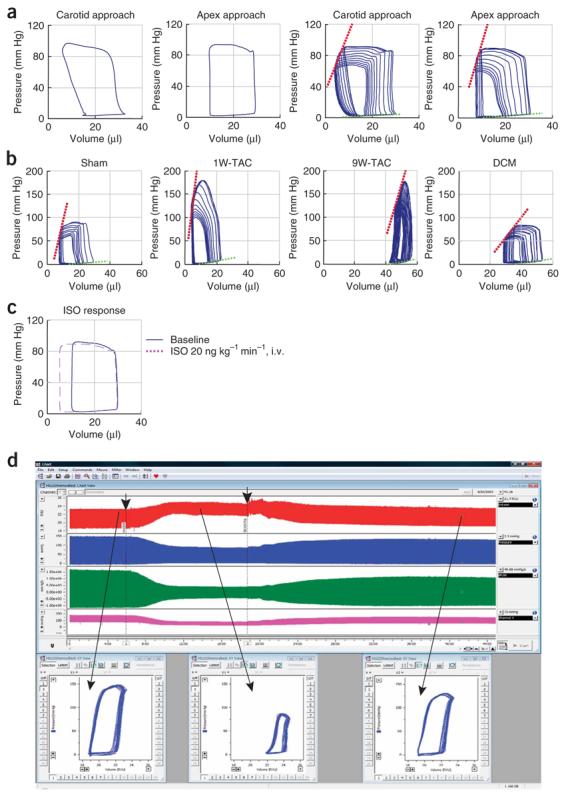Figure 6.

Representative normal and pathological mouse baseline PV loops and occlusions, and example of hemodynamic effects of drug in mice and rats. (a) Normal calibrated baseline PV loops and occlusions (calibration was performed on the basis of flow measurements and hypertonic saline injections). Normal baseline PV loops from mice (left two panels) and loops during vena cava inferior occlusions (right two panels) obtained from LV catheterization through right carotid artery (carotid approach) or through ventricular apex (see also Fig. 5 and Supplementary Movies 2-3 online). (b) Characteristic changes in PV relationships obtained by vena cava inferior occlusions in control (sham)mice, 1 and 9 weeks following TAC, and in dilated cardiomyopathy (DCM). (c) Characteristic changes in baseline (blue continuous trace) PV relationships during isoproterenol (ISO, red) infusion. (d) Characteristic changes in rat LV volume (red trace) and pressure (blue trace), +dP/dt and −dP/dt derived from LV pressure signal (green trace), and arterial pressure (purple trace) before (at baseline) or after an administration of a drug with known cardiodepressive properties (a cannabinoid type 1 (CB1) receptor agonist Hu210), followed by the recovery after the administration of the CB1 antagonist SR141716 (drug administrations are indicated by arrows). Lower panels show characteristic PV loops at baseline and following the drug administrations. Note that even without any calibrations, the volume traces and PV relationships are very informative.
